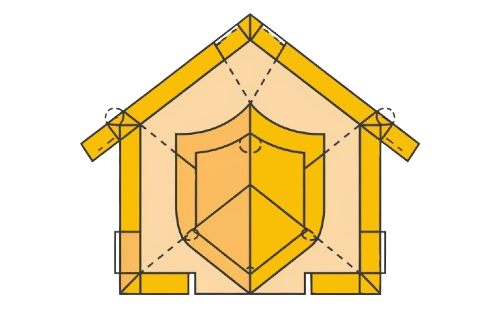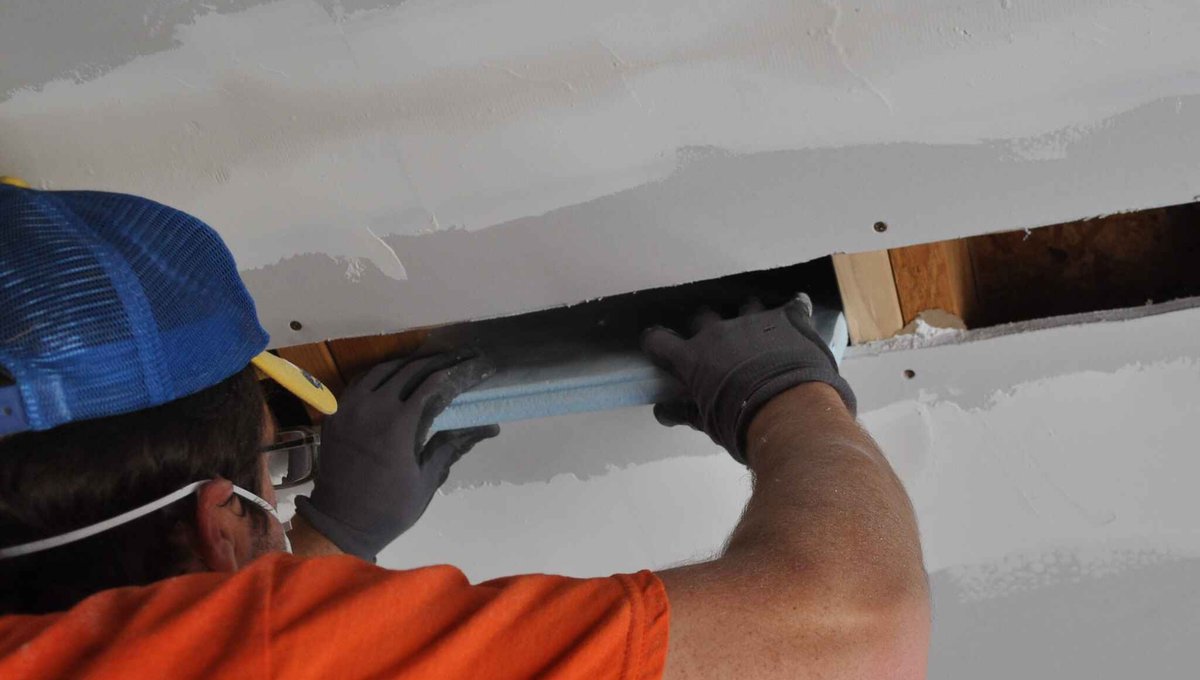A bonus room above the garage should be a comfortable and inviting space, but many homeowners struggle with extreme temperatures, moisture issues, and smells that make it difficult to enjoy. Without proper insulation, even a little or no protection in the walls, ceiling, attic, or floor can leave you dealing with a space that’s hotter in summer and colder in winter than the rest of the house. Many people find themselves asking questions like “why does my bonus room feel so different from the rest of my home?” and “how can I fix this issue?”
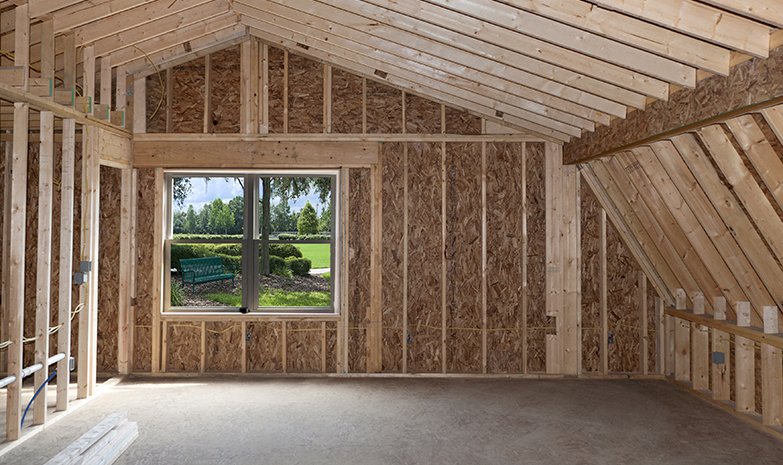
If you hear everything from outside or feel drafts that make it unpleasant, the reality is that improper insulation is likely the cause. The problem often stems from poor coverage in key areas, leading to continual discomfort. Whether the room has too little protection or none at all, the lack of insulation affects airflow and temperature control. We’re here to give you answers on how to improve your bonus room and make it a space you enjoy.
Bonus Room Insulation Problems
If you are experiencing problems with your bonus room, it could be due to little or no insulation. Many bonus rooms face extreme temperatures, moisture issues, and even condensation, making them uncomfortable. We’ve compiled some of the top reasons why this happens. If there is inadequate insulation, air leaks allow outside temperatures to affect the room, leading to heat loss in winter and trapped heat in summer. These issues often stem from gaps in the walls, ceiling, and floor, creating an unstable indoor environment. Proper insulation is essential for maintaining comfort and preventing long-term damage.
Bonus Room Above Garage Too Hot or Too Cold
Many homeowners with a bonus room over the garage struggle with extreme temperatures that make the space uncomfortable. Some have experienced as much as a 10-degree difference between their bonus room and the rest of the house. This is often due to poor insulation in key areas like the ceiling, exterior walls, and garage ceiling. Without proper insulation, air leaks occur, leading to temperature fluctuations that make the room extremely hot in summer and extremely cold in winter. The problem almost always worsens from time to time, especially in homes where the installation is inadequate or improperly done.
The best solution is adding insulation that creates an air barrier. We recommend installing spray foam or injection foam in the attic above and the garage ceiling to keep conditioned air in and outdoor air out. This helps control temperature swings and prevents heat loss. For bonus room insulation, traditional fiberglass batts can be used if spray foam isn’t an option, though they may not be as effective. If removing sheetrock isn’t possible, a retrofit application is an alternative. A well-insulated bonus room ensures a comfortable home, reducing indoor climate fluctuations.
Draft Issues in a Bonus Room Above the Garage
A bonus room above the garage is often a second-story room that feels drafty because of poor insulation and weak air sealing. This space is more prone to drafts coming through windows and outlets, especially when there isn’t an air seal in the exterior walls, floor, or ceiling. Moving air from outside enters through penetrations that were not sealed properly during construction. Those drafts are mainly caused when insulation is missing or poorly installed, making the room uncomfortable in both hot and cold seasons.
The solution is to create an air seal that will keep unwanted air at bay. Using low expansion foam or caulking around the window frame, outlets, and exterior walls can help stop drafts and improve comfort. Be sure to check for leaks along the final trim and seal any gaps with foam inserts or low expanding foam. Additionally, applying insulation behind electrical outlets and in the floor can provide an additional line of defense. Small changes, like sealing around faceplates and using proper air sealing techniques, can prevent drafts and help maintain a stable indoor temperature.
Ice Forming on the Roof
If you are noticing ice dams forming on the roof above your bonus room or bedroom over the garage, it could be a sign of little or no insulation. This cause leads to serious problems as warm air from the attic or bonus room leaks out, heats up the roof, and melts the snow. The water then freezes back, forming a thick layer of ice, often accompanied by icicles along the overhang. Without proper insulation, this cycle continues throughout the colder months, increasing the risk of water damage to your home.
The best way to combat this issue is by utilizing spray foam insulation in the cathedral ceiling and roof deck to create an air barrier that stops airflow and greatly decreases the chances of ice formation. Using high-quality insulation with good thermal resistance will reduce heat transfer and eliminate the root cause of the problem. Proper prevention techniques, like ensuring adequate ventilation and sealing all gaps, can help protect your home from long-term damage. If left unchecked, these ice dams can become the culprit behind structural issues in your roof.
High Moisture Levels in Bonus Room Over Garage
A bonus room conveniently located over the garage often struggles with high moisture levels, especially when insulating the midfloor is forgotten. Many places in the room, such as the garage ceiling, underneath the floor, and attic, allow outside air and inside air to meet, causing a large difference in temperature. This causes condensation, which, if left alone, can lead to mold and mildew. The problem stems from inadequate insulation, which fails to block external air infiltration and allows moisture to collect in small nooks and crannies.
The best solution to this issue is proper air sealing, which can drastically reduce and even eliminate the formation of condensation. Spray foam insulation is highly effective in sealing gaps and preventing air movement, which stops moisture buildup. Unlike fiberglass batts, which still allow air movement and retain moisture, foam insulation works as an air barrier that blocks external air from getting in. Another benefit of using foam insulation is that it does not create a hospitable place for mold to grow and thrive, making it a significant improvement for a finished room over the garage.
Loud Noises Coming from the Garage
A garage can be a noisy place, especially with cars, trucks, tools, and overhead doors constantly moving in and out. The sound of car engines, lawnmowers, snowblowers, and other loud equipment can easily pass through the structure, making the space above disruptive. If a bonus room is located above, these noises travel through the walls and ceiling, creating an uncomfortable environment. Without proper insulation, sound waves move freely, and the noise level remains high, affecting anyone using the room above.
One solution is placing insulation material that helps with sound attenuation and reduces unwanted banging and vibrations. Most commonly, fiberglass batts are used as a budget-friendly option, but spray foam or open-cell insulation provides better sound dampening qualities. A well-insulated garage helps prevent noise from carrying into other parts of the home, making the bonus room or adjacent areas more comfortable and peaceful.
Strong Odors from the Garage
If your garage produces annoying odors from exhaust, vehicles, or trash stored until it goes out, these smells can start wafting up into your bonus room, making it uncomfortable. Not only does poor insulation allow these pollutants to spread, but it also fails to keep out the annoying sounds from below.
The best solution is to use spray foam insulation, which will block both odors and sound, creating a cleaner and quieter space. It will also work to prevent allergens from entering and won’t retain unwanted smells, keeping your bonus room fresh and livable.
Why Are Floors So Cold?
Many bonus room owners find that their floors feel freezing in winter, even when the rest of the room is comfortable. This happens because building codes may require insulation of R-30 value, but in reality, it’s uncommon to see properly insulated floors. If you’ve ever sat in your bonus room and felt cold air on your feet, the issue is likely due to heat escaping through the floor above the garage. When the temperature outside drops below freezing, the floor absorbs the cold, making the room feel much colder than expected.
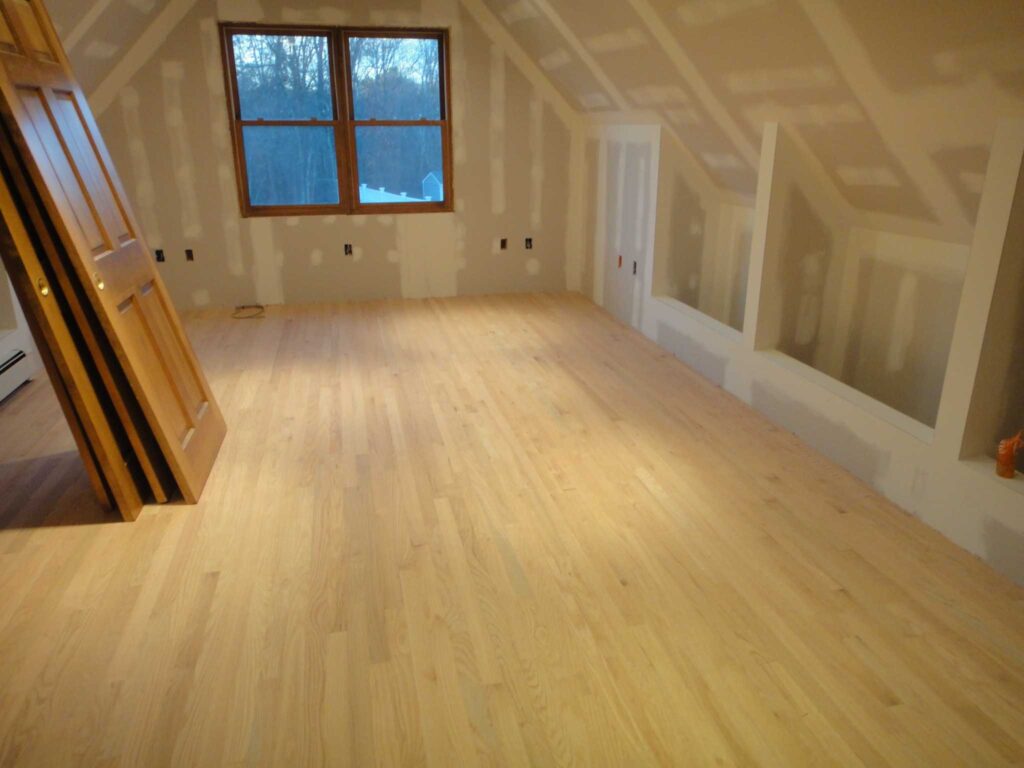
This problem often happens because it is impossible to properly install fiberglass batt insulation in a way that ensures constant contact with the subfloor. Over time, gravity works against it, causing batts to compress and settle at the bottom of the cavity, leaving spaces for cold air to circulate. Even when insulation is installed, penetrations in the joist space must be properly caulked and foamed to stop air leakage. If insulation is not maintained or checked during inspection, it can lose effectiveness within a year or two. Using spray foam is a more secure solution, as it fully seals the floor system, preventing air circulation and condensation, which can worsen the problem over time.
Fixing Insulation Problems in the Bonus Room Above Garage
A bonus room above the garage often presents insulation problems that make it uncomfortable throughout the year. Many homeowners experience issues with extreme temperatures, air leaks, and poor insulation, making the space difficult to use. The key to fixing these problems is adding superior insulation, which acts as a strong thermal boundary to maintain stable indoor temperatures. The best long-term solution includes spray foam, injection foam, or cellulose insulation, ensuring that the garage ceiling, floor system, and conditioned room are properly insulated and sealed.
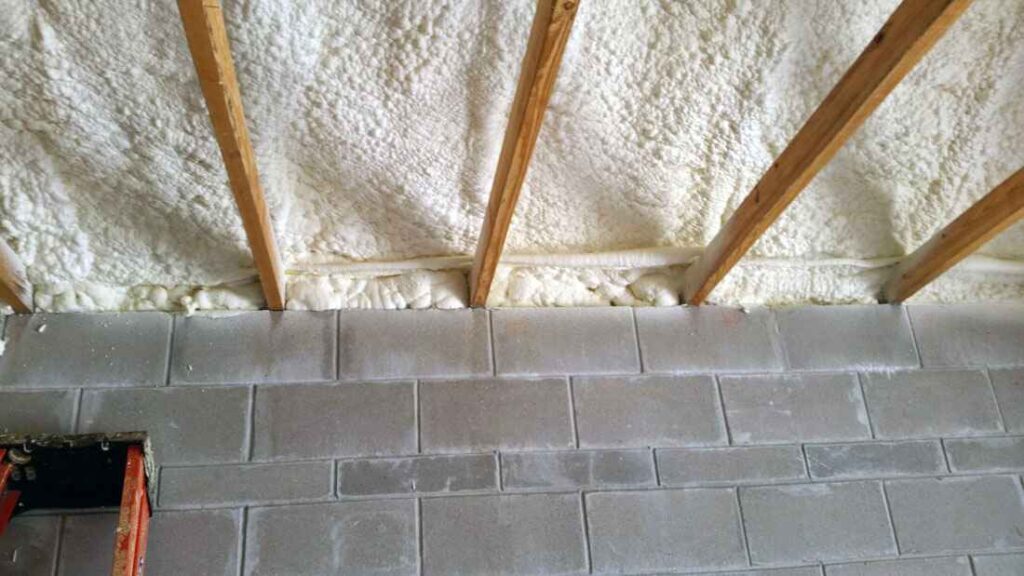
Best Insulation Fixes for the Bonus Room
Homeowners have three choices for fixing insulation problems based on budget, structure, and work required:
- Tear off the sheetrock ceiling, apply spray foam insulation to the subfloor, then install new sheetrock, finish, and paint to create a consistent and airtight thermal barrier that prevents heat loss and drafts.
- Use the Drill-and-Fill technique, which involves threading a hose into joist bays or kneewalls to pump densepack cellulose insulation into voids and cavities, ensuring a tight insulation barrier without major renovations.
- If removing sheetrock or accessing joists isn’t possible, pull up the carpet and pad, then inject cellulose insulation through the plywood subfloor. Use tapered wood plugs to seal holes for a clean finish.
Additional Steps for a Well-Insulated Bonus Room
Beyond insulation, it is essential to check for air gaps, cracks, and unfinished areas that allow air to leak. Using fiberglass, mineral wool, or spray foam for removing exposed insulation and replacing it with better materials ensures effective thermal performance. The garage ceiling should also be protected by installing 5/8-inch fire-rated drywall (x-rated), which offers fire resistance and prevents rodents from entering the insulation.
Ensuring Proper Air Sealing
Proper air sealing is another crucial step. Sealing cracks and gaps in the plywood, especially around bays and foam insulation, ensures airtightness and prevents cold drafts. These insulation improvements help homeowners create a comfortable and energy-efficient bonus room, avoiding costly heating and cooling issues while increasing the overall value of their home.
HVAC and Insulation Considerations
A properly insulated bonus room requires an appropriately sized HVAC system to maintain comfort. Without enough heated or cooled air circulating, the space can become uncomfortable, especially if cold air pools at the feet due to a missing return vent. Even if the floor is properly insulated, air leakage through the knee wall, joist bays, or gaps can still cause discomfort. To fix this, homeowners should replace batts, air seal the area, and block off joist bays to prevent heat loss and improve energy efficiency.
Proper Ventilation Considerations
In addition to insulation, proper ventilation is vital for keeping the room comfortable year-round. Installing a gable vent or a ridge vent ensures continuous ventilation and adequate airflow, preventing heat and moisture buildup. If a cathedral ceiling is present, it may require redoing the ventilation system, depending on the level of difficulty and home design preferences. If soffits are not open, they should be addressed to ensure the roof, attic, and small sections have proper venting. Whether choosing a vented or non-vented cathedral ceiling, ensuring airflow requirements are met will help prevent insulation issues in the long run.
Final Thoughts
A bonus room above the garage can be uncomfortable due to poor insulation, drafts, and extreme temperatures. Without proper insulation, the room may feel too hot in summer and too cold in winter, while moisture, noise, and air leaks add to the problem. Spray foam, injection foam, or densepack cellulose can seal gaps and create a strong thermal barrier, improving energy efficiency and comfort. Proper ventilation with ridge vents or gable vents also helps maintain temperature balance. By insulating key areas like the floor, garage ceiling, and knee wall, homeowners can make their bonus room comfortable year-round.
FAQ
What Is the Best Insulation for a Bonus Room?
The best insulation for a bonus room is spray foam, as it provides a solid air barrier and enhances temperature control. In a perfect world, we recommend installing it in the garage ceiling, attic above, and exterior walls. If spray foam isn’t an option, traditional fiberglass batts can be used, though they may not be as effective.
Why Is My Bonus Room So Cold?
A bonus room above the garage is often a second-story room that lacks proper insulation, making it prone to drafts. Cold air enters through windows, outlets, and gaps in the exterior walls and floor, causing discomfort. Adding an air seal and improving insulation can help keep the room warm and comfortable.
Is There a Downside to Spray Foam Insulation?
Spray foam insulation is a good insulator for keeping a room warm or cool, but its downsides can outweigh the benefits. Some issues include difficulty getting a mortgage, potential health issues, environmental damage, ventilation problems, and a lower home valuation.
What Happens If You Have Too Much Insulation in Your Attic?
- Moisture Buildup and Mold Growth:Too much insulation in the attic can trap moisture, leading to mold, mildew, and a musty smell.
- Health Problems: Excess moisture and mold can cause headaches, fatigue, and other health issues.
- Water and Structural Damage: Moisture buildup can weaken support beams, leading to water damage and roof issues.
- Condensation Issues: Excess insulation can make the roof deck colder, increasing the risk of condensation and long-term damage.
- Ceiling and Wall Problems: Too much insulation can put pressure on ceiling joists, causing warping, sagging, and cracks in walls and ceilings.
